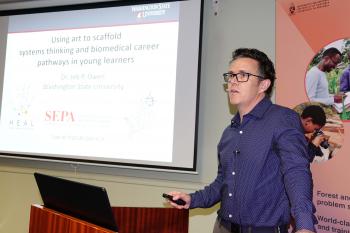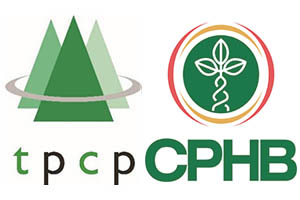Defoliators
Defoliators feed on the leaves (or needles) of trees. When the infestation of defoliating insects is low, the damage is often not noticeable. However, in high infestations, defoliation may cause loss of most or all of the foliage, and thus stunt the growth of trees. The damage caused by defoliating insects is often noticed more on smaller trees, where the insects responsible can be seen, and where very heavy infestations can result in tree death. Beside the direct damage associated with defoliating insects, the physiological stress on the tree that these insects cause can predispose the tree to attack by other insects and diseases.
The two main groups of defoliating insects on forest trees in South Africa are the larvae of moths (caterpillars) and the beetles.
Caterpillars
All the defoliating caterpillars considered as pests of forestry trees in South Africa, are native. They are also strongly polyphagous (many host plants), where one moth species often feeds on a number of native and introduced hosts. Infestation by caterpillars can be very sporadic, where heavy infestations in a particular area may only occur every number of years. However, some areas experience high infestations of a particular caterpillar every year. It is only the caterpillar stage that feeds on the leaves.
Emperor moth larvae are one of the most commonly encountered defoliating pests on forestry trees. Various species infest forest trees, but the wattle emperor moth (Gynanisa maia; infests Acacia), the pine emperor moth (Imbrasia cytherea; infests Pinus and Acacia) and the poplar emperor moth (Pseudobunea irius; infests Eucalyptus, Acacia and Pinus) are currently the most frequently encountered. Full grown caterpillars are very large and often very striking, with spines and tubercles on their bodies. Pupation occurs in the soil or under the needle mat. The moths have characteristic coloured eye-spots on their hind wings. Other less prevalent pest species include the willow tree emperor moth (Gonimbrasia tyrrhea) and the pine-bark emperor moth (Holocerina smilax). (Tooke and Hubbard 1941, Hepburn et al. 1966, Web 1974).
The pine brown tail moth (Euproctis terminalis) is a major defoliating pest of Pinus. The caterpillars are wasteful feeders as they feed on the basal part of the needle, with the remaining part of the needle falling to the ground. An abundance of green needles on the forest floor often indicates the presence of this insect. The caterpillars are covered in hairs, some of which are toxic and can cause severe irritation when in contact with human skin or inhaled. Thus, besides feeding on the needles, high infestations of these caterpillars can also pose a danger to forestry workers. The pupae, which are covered in the toxic hairs, are found in the needle mat and the adult moths have a distinct dark brown tuft of hair on the end of the abdomen (Tooke 1938).
The most serious defoliator of Acacia mearnsii is the wattle bagworm (Chaliopsis junodi). The caterpillars of these moths have a peculiar biology in that they live inside a bag made from silk and material from its plant host. Pupation takes place inside the bag. The male moth emerges from the bag, but the adult female remains grub-like and does not emerge from the bag. Other defoliating caterpillars include the brown lappet moth (Pachypasa capensis; infests Acacia, Eucalyptus, Pinus), the pine looper (Cleora herbuloti; infests Eucalyptus, Pinus), and the wattle semi-looper (Achaea lienardi; infests Acacia) (Web 1974).
Beetles
There are both native and introduced beetles that defoliate forest trees in South Africa. The native beetles, similar to the defoliating caterpillars, often feed on many native and introduced host plants, and infestations can be very sporadic. The introduced beetles will often have a more limited host range, particularly one genus of host plant, and infestations by these beetles are more regular. The later is partly due to the absence of natural enemies to control populations of the pest.
The most serious defoliating pest on Eucalyptus, is the Eucalyptus weevil (Gonipterus scutellatus). This insect was accidentally introduced from Australia and first detected in South Africa in 1916. Both the larval and adult stage feed on the leaves of Eucalyptus trees. The yellowish green larvae feed on the epidermis of leaves when they first emerge, but later instars and the adults feed on the entire leaf. Adults, with a characteristic 'X' on their back, can also feed on the shoots. High infestations can result in stunted growth and even death of young trees. Eggs are laid on the leaves in rows and covered with excrement to form a hard capsule. In the past, heavy infestations of this insect have been predominantly in high altitude areas, but recently the distribution of this insect has increased and damaging infestations have also occurred in low altitude areas (Tooke 1955). The Eucalyptus tortoise beetle (Trachymela tincticollis) is another defoliating beetle that has been accidentally introduced into South Africa (also from Australia). A biological control agent was introduced soon after this insect was detected in the Cape, and the pest has not yet been detected in the main Eucalyptus growing areas of the country (Tribe 2000).
The native defoliating beetles, although sporadic, can cause serious damage when in high infestations. The green bronze beetles (Colasposoma sp.) infest Eucalyptus and Pinus. The damage from these brightly coloured beetles is particularly evident on young trees and transplants, which can be killed where all leaves are consumed or where the insect ring-barks the plant when feeding on the shoot. The grey weevil (Elliminestes laesicollis) is also known to attack transplants and young trees, where heavy infestations can result in stunted growth. This weevil is smaller in size than the Eucalyptus weevil, and is commonly encountered when replanting after sugarcane. The wattle chafer (Hypopholis sommerii; infests Acacia, Pinus) and the lesser wattle chafer (Monochelus calcaratus; infests Acacia) are generally considered as minor pests, although high infestations of these insects has been recorded. The larvae of both these insects are white grubs (see Pests of establishment). Another native defoliating beetle is the Catamonus weevil (Catamonus sp.) which infests Acacia mearnsii.










































